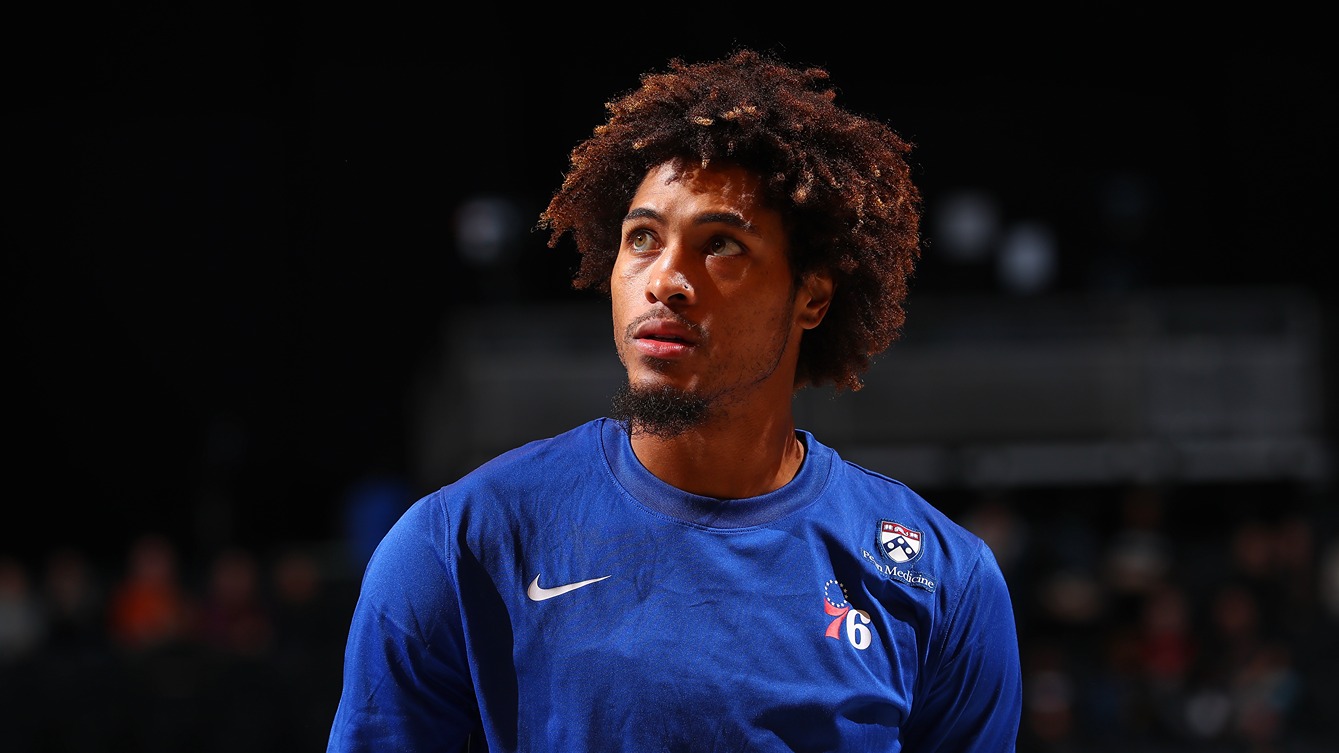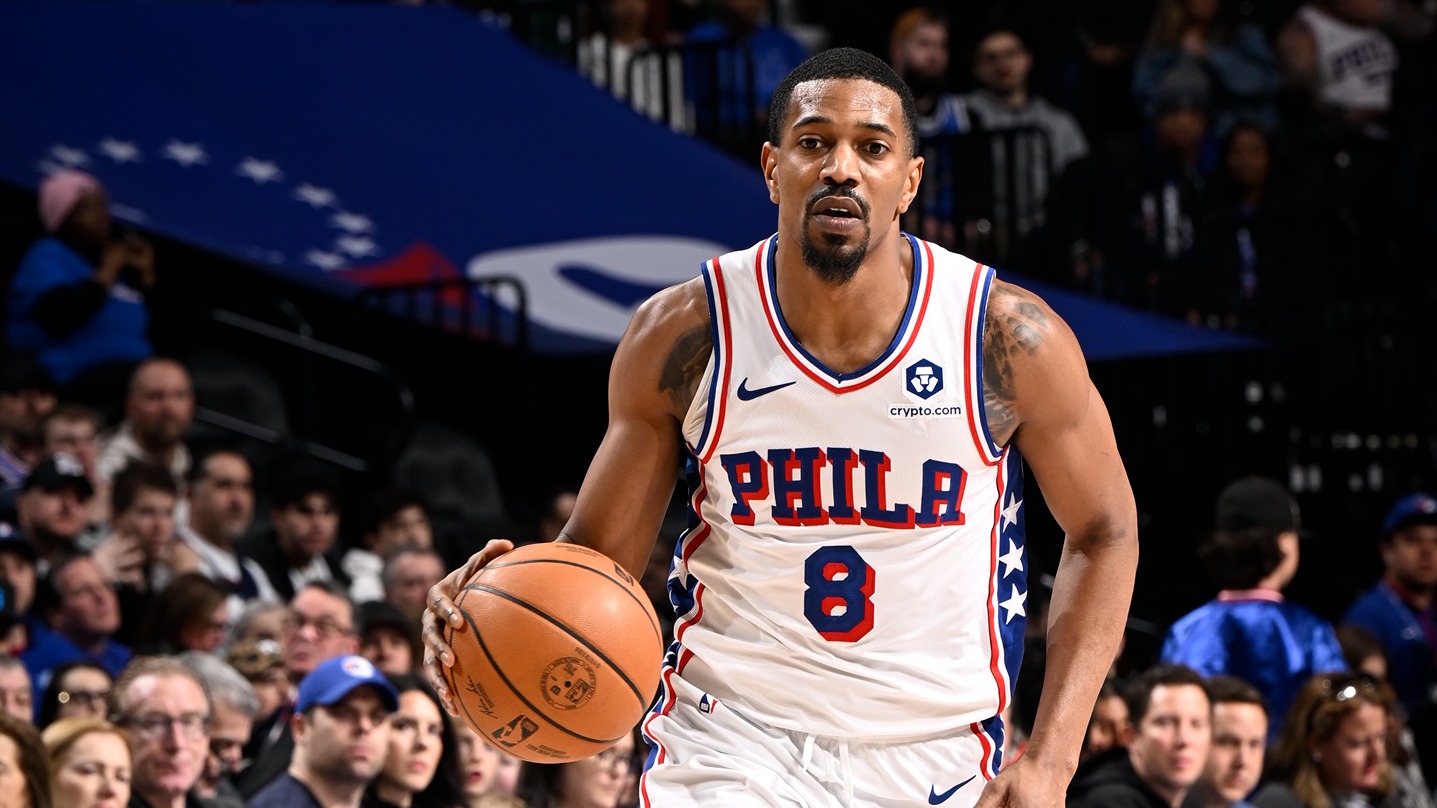The Sixers' offense has been a popular topic of late, and that's understandable as Brett Brown adjusts his offense to try to get the best out of three very different stars.
The defense shouldn't fly under the radar, however, and it certainly hasn't with the players and coaches.
After the Sixers' loss to the Hawks on Friday night, Brown said it was "disturbing watching our bench guard."
Ben Simmons said, "I think we were just too soft. We're not taking it personal enough when guys score on us."
After finishing last season third in the NBA in defensive rating (103.8), the Sixers are 11th in that category this season with a 108.1 rating.
The concern about the defense is warranted, likely more than the relative nitpicking about offensive fit (see story).
Philadelphia 76ers
Complete coverage of the Philadelphia 76ers and their rivals in the NBA from NBC Sports Philadelphia.
Let's look at what's wrong with the Sixers' defense and some possible ways to improve it.
Subpar personnel
In an earlier film review on the team's pick-and-roll defense, we highlighted that, outside of Jimmy Butler, Joel Embiid and Simmons, the Sixers are lacking above-average defensive players.
That hasn't changed.
Derrick Rose blew by Landry Shamet on this play from Tuesday night.
Jeremy Lin toasted Furkan Korkmaz, easily driving to the middle for an and-one.
It's worth mentioning (since it's fundamental to many of the Sixers' defensive issues), but there's no use harping on this fact - the Sixers are a team of mostly below-average defenders.
Miscommunication
Besides screens involving Embiid, the Sixers switched on almost every pick at the beginning of the season. As a result, opponents could more easily target mismatches against players like Shamet, Korkmaz or T.J. McConnell.
The Sixers have become more selective about switching, leading to fewer of the blatant mismatches opponents desire, but perhaps more miscommunication now that there isn't a near-automatic switch on screens involving non-centers.
Atlanta has Kevin Huerter set a ball screen for Trae Young on this play from Friday. Huerter's man, JJ Redick, switches onto Young, but Korkmaz doesn't realize Huerter is now his responsibility until it's far too late, after Dewayne Dedmon sets a back screen to free Huerter for a lob.
Young got the easiest basket of his NBA career a little over a minute later. It's unclear what McConnell and Wilson Chandler had in mind on their coverage of the pick-and-roll between Young and John Collins, but it wasn't this.
Our best guess, based on McConnell's animated reaction, is that McConnell was expecting some sort of help from Chandler - perhaps he thought Chandler was going to hedge the screen, given the way the veteran initially slid up to Young's right.
On a separate note, Simmons' feint as if he was going to protect the rim and ultimate decision to hover in between the driving Young and Dedmon in the corner is perplexing.
The play is a strong contender for the Sixers' worst defensive sequence of the season, and a good illustration of the team's issues with communication in a scheme that no longer switches by near-default.
Effort
It's unrealistic to expect perfect effort in the middle of the regular season. Still, a team with the Sixers' deficiencies in terms of defensive personnel is likely going to struggle without consistent effort.
Simmons' defensive effort was questionable on a few plays vs. Atlanta.
In the example below, his teammates recover well to pick up a man in transition. Simmons is late to identify Huerter as the player he should guard and he doesn't bother to put a hand up on a half-hearted closeout.
Jeff Teague beat Simmons down the floor after a dead-ball turnover by the Sixers and, despite Simmons' request for help, nobody provided it, giving Teague a wide-open lane.
A new rotation?
In the Sixers' 42-point demolition of the Timberwolves on Tuesday, Brown might have found a way to get more out of the personnel he currently has.
Brown used rookie Jonah Bolden as a backup center, and he was encouraged by what he saw from Bolden anchoring the defense when Embiid was off the floor.
He's got a bounce. … And he can do some things at the rim - he's not afraid of making tough plays, and he's able to make tough plays. Using him as a backup five and letting [Mike] Muscala play more of a four and then sliding Wilson [Chandler] down to a three, I think it's a good look.
You can pencil Bolden in for a bad, overzealous foul or two just about every game, but his defensive tools jump out on tape.
He can hang with players on the perimeter incredibly well for somebody who is 6-foot-10, and he has good instincts as a shot blocker.
His length and athleticism allow him to recover when he's caught leaning in the wrong direction, like on the play below vs. Dario Saric.
And he protects the rim well even when he's not blocking shots. Here, Bolden cleans up Shamet's mistake, sliding with DeAndre' Bembry and forcing him into a difficult attempt.
With Bolden, the stats - albeit in a small, 257-minute sample size - back up the eye test. His 99.1 defensive rating is the best on the Sixers.
The Sixers' defensive issues are deeper than their backup center, but tweaking the rotation to have Bolden at the five behind Embiid could alleviate some of the problems with the team's defense when Embiid sits.
Click here to download the MyTeams App by NBC Sports! Receive comprehensive coverage of your teams and stream the Flyers, Sixers and Phillies games easily on your device.












